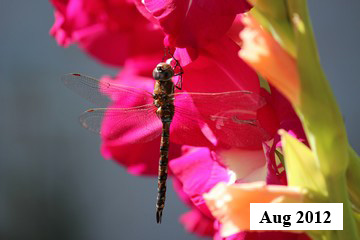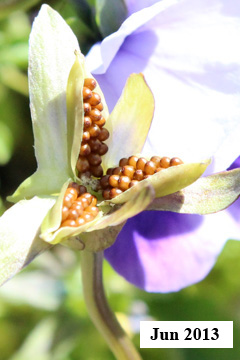What Can B
The B is for Birds, Bees and Butterflies



When gardens are not doing as well as they used to, what can you do?
I have lived in this location for thirty years and the last few years have presented a few challenges for me as a gardener. For many years bees buzzed almost non stop in my lavender patch, then one year they were suddenly gone. One year my huge apple tree produced only two apples. Tomatoes and pumpkins planted in the soil no longer ripened. Around the neighborhood, there are very few flowers in front gardens any more, and people have indicated they no longer plant due to a variety of factors. Rhodos, lilac, foxgloves and Calla lilies provide the limited colors in the neighborhood in spring.
When things no longer work as well as they used to, what do you do? Here are some ideas based on three years of working for pollinators:
- Step 1: Identify positive and negative observations
- As indicated above, negative observations were that trees and plants were not as productive as before
- Positive observations were that I noticed that we started to have some bees back again, this time at the clover in my grass, at a large blow-in comfrey plant and at a newly-purchased lavender plant.
- See what already works and maintain or enhance it.
- Step 2: Try to understand why changes are happening
- Some causes are widespread. For example, changing climate means that where we live warms up later in the year and is cooler.
- Some causes are local. For example, watering restrictions where we live include instructions to let lawns go brown. This means adjacent flower borders miss out on that watering.
- Step 3: Develop a focus for your new garden
- For me, this was a focus on attracting and supporting pollinators. I have a particular interest in hummingbirds.
- Step 4: Try new approaches
- Some suggestions are given below
- Step 5: Keep a record
- I have found it helps to keep a record to compare how things change from year to year. A written record is valuable, and Photographs with dates help a lot.
- Step 6: Enjoy the results
- Appreciate nature's palette, and take photographs. Close up photographs let you see the detailed structures and subtle colours of the insides of flowers.






Trying new approaches
- Think about timings
- We arrange plantings with knowledge of flowering times to have a continuous source of pollen and nectar available throughout the spring and summer. The heuchera is an early bloomer that is well-used by humming birds and bees. Nasturtiums are available most of the summer.




- Don't just plant in the ground
- Try hanging baskets: I use moss from the lawn to line the baskets.
- Planting in tubs/pots: We get recycled free pots for our plants.

- Protecting perennials over winter
- Since many of the perennials are planted in pots, I simply move them to a sheltered place for the winter.
- Retaining blow-ins
- We have kept and enjoyed, foxgloves, comfrey and rose campion
- Where the blow ins come in, leave them messy: pollinators like the diversity.



- Seed harvesting and sharing
- Seed harvesting starts in late spring and continues into early fall.
- This year I harvested Viola seed pods for the first time


- Plants I have found to work include: heuchera, lupins, pansies, sweet peas, nasturtiums, gladioli, daisies, petunias, sunflowers, lavender, snowflake, foxgloves and fuschias.
- Be innovative
- We transformed a malfunctioning and irreparable hot tub into a deck garden.


- Composting and working the soil
- Vegetable composting combributes significantly to garbage reduction. Composting is very simple and we get really good soil from it, keeping worm and fruit fly populations busy.
- Working with the weather
- Our weather seems less predictable than in the past, so whenever we get an hour or so of sunshine, or even a dry spell during rain, I make the most of the opportunity.
- Expect the unexpected
- We have a bumble bee nest in our ivy patch.
- Trees
- Trees can ehance your garden and are enjoyed by many birds, insects and spiders.
























